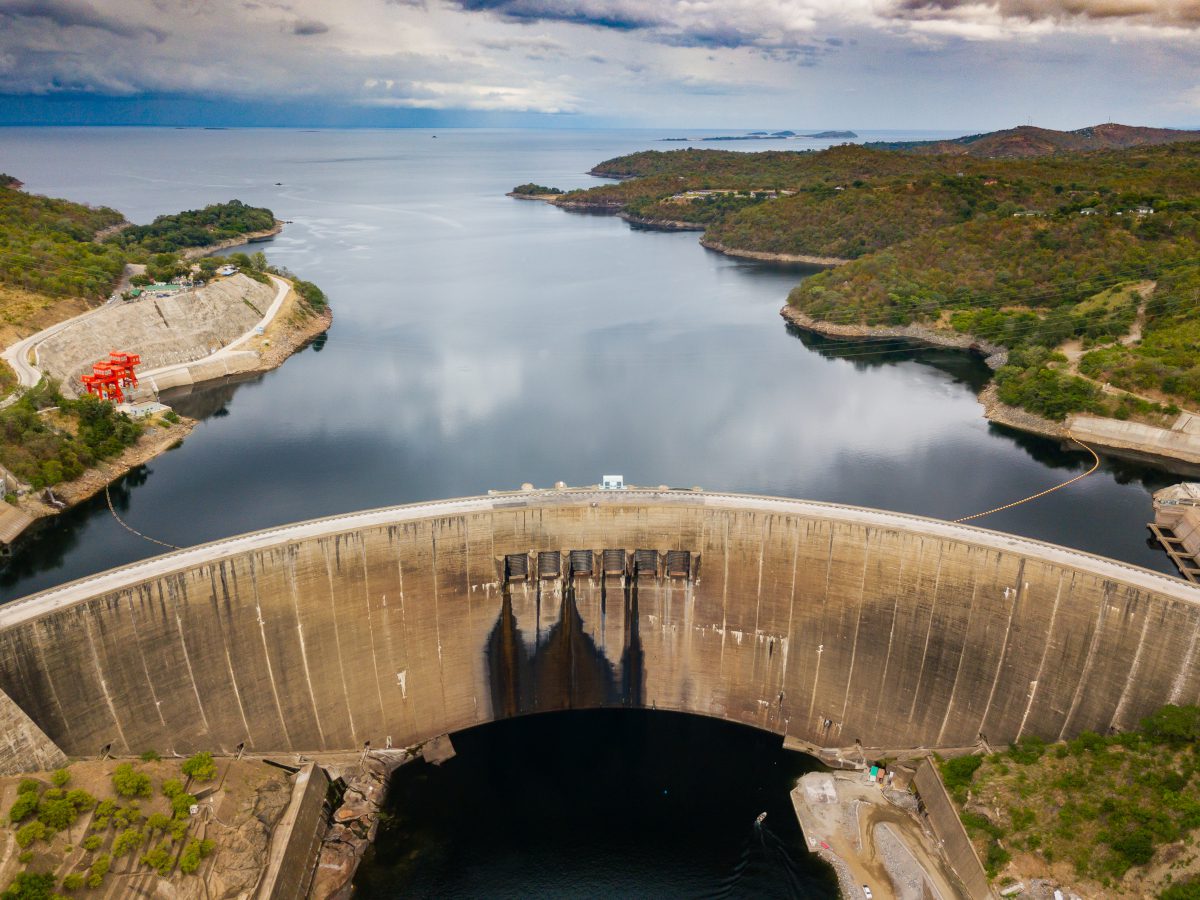As Texas stares down a water shortfall, its leaders are looking at vast volumes of brown, briney oilfield wastewater as a hopeful source of future supply. They don’t have many other options.
But extracting clean water from this toxic slurry will require enormous amounts of energy, just as Texas fights to keep up with the rapidly growing power demands of a high-tech industrial buildout.
At current efficiency levels, treating all the effluent of the West Texas oilfield would require up to 26 gigawatts of power, more than the total generation capacity of most U.S. states. Even if operators achieved their ambitious target efficiencies, the Permian would still need an additional five gigawatts, enough to power about five million average American homes.
We’re hiring!
Please take a look at the new openings in our newsroom.
See jobs
“It’s just more power needed when we’re already stressed,” said Doug Robison, a longtime fracking executive whose new company, Natura Resources, plans to use small nuclear reactors to treat the wastewater. “We need to add water back into the state’s supply.”
Leaders in Texas are scrambling to head off water shortages predicted by the year 2030 with few new water sources to tap. Meanwhile, wastewater volumes in Texas’ Permian Basin, the nation’s most productive oilfield, have increased sharply in recent years to a staggering 25 million barrels, or about a billion gallons, per day, according to findings that a state-funded research group, the Texas Produced Water Consortium, will present to lawmakers later this month.
“It’s a lot of water,” said Shane Walker, director of the Consortium at Texas Tech University. “Instead of just throw it away, we could treat it and recover some.”

In January, the Consortium signed an agreement with Robison’s company, Natura, to develop a wastewater treatment facility powered by the heat of a next-generation molten salt nuclear reactor. Natura is one of two U.S. companies with permits to build such a reactor, and is currently building its first unit at Abilene Christian University—part of Texas’ plan to meet tremendous incoming industrial power demands with widespread deployment of small nuclear reactors.
Meanwhile, lawmakers in Austin are pushing to make billions of dollars of public financing available to projects that can treat oilfield wastewater for reuse in agriculture or industry. Skeptics argue that water purification will probably never amount to more than a marginal solution, given its cost.
Wastewater from the West Texas oilfields, which comes back to the surface after hydraulic fracturing, or fracking, is practically the filthiest fluid to ever be contemplated for treatment. It’s up to seven times as salty as the sea, full of proprietary drilling chemicals and naturally occurring hydrocarbons, ammonia and radioactive elements from the earth. It can’t be treated by the most common methods that use membrane filters, so companies are racing to apply other heat-based processes.
“Typically, thermal desalination requires more energy,” Walker said. “We’re going to need more energy.”
That’s where Natura’s nuclear reactor design comes in. The unit wouldn’t supply electricity, just raw heat to slowly evaporate clean water from the brine, which is easy since a molten salt reactor runs at over 1,000 degrees Fahrenheit, far hotter than traditional nuclear reactors.
Thermal processes for desalination aren’t new, but they are mostly applied to smaller-scale treatment within industrial operations because of their large energy requirements.
In the Permian Basin, however, the volumes in question are enormous. Oil wells can spit up three barrels of wastewater for every barrel of crude, about a billion gallons every day. That’s enough to cover a square mile in five feet of brine. Almost all of that brine is pumped back underground at high pressure for disposal, which continues to cause intensifying earthquakes, surface blowouts and other environmental disasters across the area.
Injection will continue for the foreseeable future. Large scale solutions for water treatment remain years away and will require a massive buildout of energy supply that will likely include many new gas plants and wind and solar facilities before a new nuclear reactor is deployed.
Current water treatment pilot projects in the Permian Basin are targeting energy costs between five and 25 kilowatt hours per barrel of wastewater treated.
That compares with 1.3 kilowatt hours per barrel to desalinate seawater and 0.3 kilowatt hours per barrel to treat municipal wastewater, according to Mike Hightower, director of the New Mexico Produced Water Research Consortium, who has published research on the energy costs of water treatment.
For 1.05 billion gallons of effluent daily from the Texas side of the Permian Basin, that comes out between five and 26 gigawatts of power demand, approximately the statewide generation capacities of Idaho and Indiana, respectively.
“It’s expensive from an energy perspective; you need a lot of energy to treat this water,” Hightower said. “People need to think about costs and benefits rather than just cost.”
More Water, Fewer Earthquakes?
When Texas lawmakers devised a plan in 2023 to expand the state’s water supply, they found most sources were totally tapped out. The lakes were fully allocated, the rivers all spoken for and the aquifers all over-pumped. They identified just three new potential sources of water: desalinated seawater, deep, salty groundwater and treated oilfield wastewater.
Hightower estimated Texas could grow its GDP by $10 billion if it unlocked this new water supply for industrial projects, data centers or farms in its arid west.


At the same time, he said, it could protect oil companies from possible limits on production due to the environmental effects of wastewater injection. In recent years, Texas authorities have begun limiting injections in certain areas due to strengthening earthquakes and geysers of gassy brine. As the problems only get worse, future restrictions on wastewater disposal could ultimately limit oil production.
“Treatment is more expensive than disposal, but it’s essentially a risk management strategy. It buys you insurance that you’re not going to have to cut production if there’s more seismicity,” Hightower said. “You can continue your operations because you are reducing your disposal needs.”
Christine Guerrero, a career petroleum engineer in Houston, said companies won’t opt to treat their wastewater until the costs are lower than injection disposal.
“It’s simply too expensive,” said Guerrero, an independent advisor who previously worked for Schlumberger, Chevron and Hess Corporation. “Unfortunately there’s too many companies in the industry that are not going to do the right thing until they’re forced to.”
This story is funded by readers like you.
Our nonprofit newsroom provides award-winning climate coverage free of charge and advertising. We rely on donations from readers like you to keep going. Please donate now to support our work.
Donate Now
The right thing, she said, was to pay to treat wastewater instead of injecting it all underground. But she didn’t expect wastewater treatment projects to cause any significant reduction in the volumes injected daily. Even those treatment projects would create waste products that require disposal.
Thermal processes for desalination can yield about half the original volume in clean water, about 500 million gallons per day in the Permian Basin. The other half that’s left behind is mostly salts—enough, by Guerrero’s calculations, to fill more than 6,900 rail cars per day. It would most likely be injected back underground.
“The water cleaning is probably not going to work there as anything more than a marginal solution,” said Guerrero, who has worked on oil and gas projects in 30 countries. “It gives this false sense that there’s something coming that’s going to stop all this.”
Pilot Projects Advance
State leaders hope that public funding for produced treatment can help tip the economic scales towards viability. In 2023 the Legislature authorized a $1 billion state water fund, including millions for pilot projects in oilfield wastewater treatment. Currently, lawmakers are debating legislation that would make more money available to build out commercial scale facilities.
In the Permian Basin, pilot projects are advancing. One company, Texas Pacific Water Resources, has begun construction on a five megawatt test facility that will treat up to 10,000 barrels of wastewater per day and spray it over a 100-acre plot near the town of Orla.
TPWR uses a thermal process that delicately freezes the fluids so salts sink to the bottom, then captures a top layer and filters it through membranes, then charcoal, to remove remaining chemicals like volatile organic compounds and ammonia.
The company aims to use between five and 25 kilowatts per barrel of wastewater treated, said Robert Crain, executive vice president of TPWR.
“Any thermal treatment is going to be in that range,” he said. “Everybody’s trying to get it as low as possible.”
Crane said TPWR currently operates toward the higher end of the range, but that he expected the number to come down as processes are honed and improved.
To power the facility, TPWR has contracted dedicated electrical generation fueled from a nearby gas pipeline. TPWR’s thermal desalination process uses more energy because it draws electricity to produce heat, rather than drawing the heat directly.
But Crain said the operation could dramatically reduce its energy costs by incorporating the wasted heat left off from the gas furnaces of the power plants.
“Waste heat capture through natural gas generation can truly drive that down into a very economic range of cost,” Crain said.
That’s where Robison, the CEO of Natura Resources, thinks a small nuclear reactor could work. A current design can produce 100 megawatts of electricity but 250 megawatts equivalent of thermal energy.
Built at the site of treatment facilities, it could provide that thermal energy directly to the thermal processes.
“We’re not talking about electricity, now, we’re talking about heat,” Robison said. “Molten salt reactors that operate at such high temperatures really add a new solution that was not available previously.”
About This Story
Perhaps you noticed: This story, like all the news we publish, is free to read. That’s because Inside Climate News is a 501c3 nonprofit organization. We do not charge a subscription fee, lock our news behind a paywall, or clutter our website with ads. We make our news on climate and the environment freely available to you and anyone who wants it.
That’s not all. We also share our news for free with scores of other media organizations around the country. Many of them can’t afford to do environmental journalism of their own. We’ve built bureaus from coast to coast to report local stories, collaborate with local newsrooms and co-publish articles so that this vital work is shared as widely as possible.
Two of us launched ICN in 2007. Six years later we earned a Pulitzer Prize for National Reporting, and now we run the oldest and largest dedicated climate newsroom in the nation. We tell the story in all its complexity. We hold polluters accountable. We expose environmental injustice. We debunk misinformation. We scrutinize solutions and inspire action.
Donations from readers like you fund every aspect of what we do. If you don’t already, will you support our ongoing work, our reporting on the biggest crisis facing our planet, and help us reach even more readers in more places?
Please take a moment to make a tax-deductible donation. Every one of them makes a difference.
Thank you,


















